Medscape CME Activity
Medscape, LLC is pleased to provide online continuing medical education (CME) for selected journal articles, allowing clinicians the opportunity to earn CME credit. In support of improving patient care, these activities have been planned and implemented by Medscape, LLC and Emerging Infectious Diseases. Medscape, LLC is jointly accredited by the Accreditation Council for Continuing Medical Education (ACCME), the Accreditation Council for Pharmacy Education (ACPE), and the American Nurses Credentialing Center (ANCC), to provide continuing education for the healthcare team.
CME credit is available for one year after publication.
Volume 14—2008
Volume 14, Number 12—December 2008
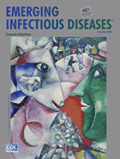
During 1996–1997, a new Vibrio vulnificus biotype 3, which caused severe soft tissue infection after fishbone injury, emerged in Israel. We conducted a follow-up study from 1998 through 2005 to assess changing trends, outcomes, and molecular relatedness of the implicated strains. A total of 132 cases (71% confirmed and 29% suspected) of V. vulnificus biotype 3 infection were found. Most infections (95%) were related to percutaneous fish exposure, mainly tilapia (83%) or common carp (13%). Bacteremia, altered immune status, and history of ischemic heart disease were identified as independent risk factors for death, which reached a prevalence of 7.6%. Pulsed-field gel electrophoresis patterns of strains from 1998 through 2005 and from 1996 through 1997 showed a high degree of homogeneity and were distinct from those of V. vulnificus biotype 1. Infections caused by V. vulnificus biotype 3 continue affect the public’s health in Israel.
| EID | Zaidenstein R, Sadik C, Lerner L, Valinsky L, Kopelowitz J, Yishai R, et al. Clinical Characteristics and Molecular Subtyping of Vibrio vulnificus Illnesses, Israel. Emerg Infect Dis. 2008;14(12):1875-1882. https://doi.org/10.3201/eid1412.080499 |
|---|---|
| AMA | Zaidenstein R, Sadik C, Lerner L, et al. Clinical Characteristics and Molecular Subtyping of Vibrio vulnificus Illnesses, Israel. Emerging Infectious Diseases. 2008;14(12):1875-1882. doi:10.3201/eid1412.080499. |
| APA | Zaidenstein, R., Sadik, C., Lerner, L., Valinsky, L., Kopelowitz, J., Yishai, R....Weinberger, M. (2008). Clinical Characteristics and Molecular Subtyping of Vibrio vulnificus Illnesses, Israel. Emerging Infectious Diseases, 14(12), 1875-1882. https://doi.org/10.3201/eid1412.080499. |
Volume 14, Number 11—November 2008
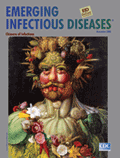
Our study confronts the use of antimicrobial agents in ambulatory care with the resistance trends of 2 major pathogens, Streptococcus pneumoniae and Escherichia coli, in 21 European countries in 2000–2005 and explores whether the notion that antimicrobial drug use determines resistance can be supported by surveillance data at national aggregation levels. The data obtained from the European Surveillance of Antimicrobial Consumption and the European Antimicrobial Resistance Surveillance System suggest that variation of consumption coincides with the occurrence of resistance at the country level. Linear regression analysis showed that the association between antimicrobial drug use and resistance was specific and robust for 2 of 3 compound pathogen combinations, stable over time, but not sensitive enough to explain all of the observed variations. Ecologic studies based on routine surveillance data indicate a relation between use and resistance and support interventions designed to reduce antimicrobial drug consumption at a national level in Europe.
| EID | van de Sande-Bruinsma N, Grundmann H, Verloo D, Tiemersma E, Monen J, Goossens H, et al. Antimicrobial Drug Use and Resistance in Europe. Emerg Infect Dis. 2008;14(11):1722-1730. https://doi.org/10.3201/eid1411.070467 |
|---|---|
| AMA | van de Sande-Bruinsma N, Grundmann H, Verloo D, et al. Antimicrobial Drug Use and Resistance in Europe. Emerging Infectious Diseases. 2008;14(11):1722-1730. doi:10.3201/eid1411.070467. |
| APA | van de Sande-Bruinsma, N., Grundmann, H., Verloo, D., Tiemersma, E., Monen, J., Goossens, H....Ferech, M. (2008). Antimicrobial Drug Use and Resistance in Europe. Emerging Infectious Diseases, 14(11), 1722-1730. https://doi.org/10.3201/eid1411.070467. |
Volume 14, Number 10—October 2008
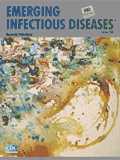
Streptococcus pneumoniae, Haemophilus influenzae, Moraxella catarrhalis, and Staphylococcus aureus often colonize the nasopharynx. Children are susceptible to bacterial infections during or soon after upper respiratory tract infection (URI). We describe colonization with these 4 bacteria species alone or in combination during URI. Data were from a prospective cohort of healthy children 6 to 36 months of age followed up for 1 year. Analyses of 968 swabs from 212 children indicated that S. pneumoniae colonization is negatively associated with colonization by H. influenzae. Competitive interactions shifted when H. influenzae and M. catarrhalis colonized together. In this situation, the likelihood of colonization with all 3 species is higher. Negative associations were identified between S. pneumoniae and S. aureus and between H. influenzae and S. aureus. Polymicrobial interactions differed by number and species of bacteria present. Antimicrobial therapy and vaccination strategies targeting specific bacterial species may alter the flora in unforeseen ways.
| EID | Pettigrew MM, Gent JF, Revai K, Patel JA, Chonmaitree T. Microbial Interactions during Upper Respiratory Tract Infections. Emerg Infect Dis. 2008;14(10):1584-1591. https://doi.org/10.3201/eid1410.080119 |
|---|---|
| AMA | Pettigrew MM, Gent JF, Revai K, et al. Microbial Interactions during Upper Respiratory Tract Infections. Emerging Infectious Diseases. 2008;14(10):1584-1591. doi:10.3201/eid1410.080119. |
| APA | Pettigrew, M. M., Gent, J. F., Revai, K., Patel, J. A., & Chonmaitree, T. (2008). Microbial Interactions during Upper Respiratory Tract Infections. Emerging Infectious Diseases, 14(10), 1584-1591. https://doi.org/10.3201/eid1410.080119. |
Volume 14, Number 8—August 2008
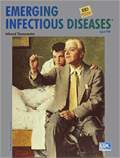
We conducted a systematic review of studies that used reverse transcription–PCR to diagnose norovirus (NoV) infections in patients with mild or moderate (outpatient) and severe (hospitalized) diarrhea. NoVs accounted for 12% (95% confidence interval [CI] 10%–15%) of severe gastroenteritis cases among children <5 years of age and 12% (95% CI 9%–15%) of mild and moderate diarrhea cases among persons of all ages. Of 19 studies among children <5 years of age, 7 were in developing countries where pooled prevalence of severe NoV disease (12%) was comparable to that for industrialized countries (12%). We estimate that each year NoVs cause 64,000 episodes of diarrhea requiring hospitalization and 900,000 clinic visits among children in industrialized countries, and up to 200,000 deaths of children <5 years of age in developing countries. Future efforts should focus on developing targeted strategies, possibly even vaccines, for preventing NoV disease and better documenting their impact among children living in developing countries, where >95% of the deaths from diarrhea occur.
| EID | Patel MM, Widdowson M, Glass RI, Akazawa K, Vinjé J, Parashar UD. Systematic Literature Review of Role of Noroviruses in Sporadic Gastroenteritis. Emerg Infect Dis. 2008;14(8):1224-1231. https://doi.org/10.3201/eid1408.071114 |
|---|---|
| AMA | Patel MM, Widdowson M, Glass RI, et al. Systematic Literature Review of Role of Noroviruses in Sporadic Gastroenteritis. Emerging Infectious Diseases. 2008;14(8):1224-1231. doi:10.3201/eid1408.071114. |
| APA | Patel, M. M., Widdowson, M., Glass, R. I., Akazawa, K., Vinjé, J., & Parashar, U. D. (2008). Systematic Literature Review of Role of Noroviruses in Sporadic Gastroenteritis. Emerging Infectious Diseases, 14(8), 1224-1231. https://doi.org/10.3201/eid1408.071114. |
Volume 14, Number 7—July 2008
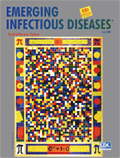
In 2002, we investigated a cluster of patients with Alcaligenes xylosoxidans bloodstream infections by conducting a matched case–control study and a prospective study. Pulsed-field gel electrophoresis (PFGE) was performed on blood culture isolates, and 1 explanted central venous catheter (CVC) was tested for biofilm. We identified 12 cases of A. xylosoxidans bloodstream infection. Case-patients were more likely than controls to have had a CVC (7/7 [100%] vs 4/47 [8.7%], respectively; p<0.0001). Ten case isolates were indistinguishable by PFGE analysis, and A. xylosoxidans biofilm from the CVC matched the outbreak strain. We observed multiple breaches in infection control, which may have caused contamination of multidose vials used to flush the CVCs. Our study links A. xylosoxidans with CVC biofilm and highlights areas for regulation and oversight in outpatient settings.
| EID | Kim MJ, Bancroft E, Lehnkering E, Donlan RM, Mascola L. Alcaligenes xylosoxidans Bloodstream Infections in Outpatient Oncology Office. Emerg Infect Dis. 2008;14(7):1046-1052. https://doi.org/10.3201/eid1407.070894 |
|---|---|
| AMA | Kim MJ, Bancroft E, Lehnkering E, et al. Alcaligenes xylosoxidans Bloodstream Infections in Outpatient Oncology Office. Emerging Infectious Diseases. 2008;14(7):1046-1052. doi:10.3201/eid1407.070894. |
| APA | Kim, M. J., Bancroft, E., Lehnkering, E., Donlan, R. M., & Mascola, L. (2008). Alcaligenes xylosoxidans Bloodstream Infections in Outpatient Oncology Office. Emerging Infectious Diseases, 14(7), 1046-1052. https://doi.org/10.3201/eid1407.070894. |
Volume 14, Number 6—June 2008
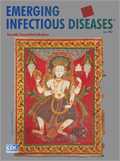
We examined the transmission of human papillomavirus (HPV) in 25 heterosexual, monogamous couples (25 men, 25 women), followed up over an average of 7.5 months. A total of 53 heterosexual transmission events were observed among 16 couples (14 male-to-female and 39 female-to-male). Sexual transmission involved 13 different oncogenic and nononcogenic HPV types; 8% were vaccine-covered types transmitted between partners. The overall rate of HPV transmission from the penis to the cervix was 4.9/100 person-months, which was substantially lower than that from the cervix to the penis (17.4/100 person-months). Transmission between the hands and genitals, as well as apparent self-inoculation events (primarily in men), were also observed. Couples who transmitted HPV were more sexually active and used condoms less frequently. These results have implications for HPV prevention and control strategies, including the targeting of prophylactic vaccines.
| EID | Hernandez BY, Wilkens LR, Zhu X, Thompson P, McDuffie K, Shvetsov YB, et al. Transmission of Human Papillomavirus in Heterosexual Couples. Emerg Infect Dis. 2008;14(6):888-894. https://doi.org/10.3201/eid1406.0706162 |
|---|---|
| AMA | Hernandez BY, Wilkens LR, Zhu X, et al. Transmission of Human Papillomavirus in Heterosexual Couples. Emerging Infectious Diseases. 2008;14(6):888-894. doi:10.3201/eid1406.0706162. |
| APA | Hernandez, B. Y., Wilkens, L. R., Zhu, X., Thompson, P., McDuffie, K., Shvetsov, Y. B....Goodman, M. T. (2008). Transmission of Human Papillomavirus in Heterosexual Couples. Emerging Infectious Diseases, 14(6), 888-894. https://doi.org/10.3201/eid1406.0706162. |
Volume 14, Number 5—May 2008
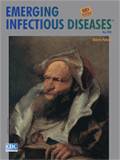
Nursing home residents are at high risk for invasive group A streptococcal (GAS) disease, and clusters of cases in nursing homes are common.To characterize the epidemiologic features of invasive GAS disease in nursing homes, we conducted active, statewide, population- and laboratory-based surveillance in Minnesota from April 1995 through 2006. Of 1,858 invasive GAS disease cases, 134 (7%) occurred in nursing home residents; 34 of these cases were identified as part of 13 clusters. Recognizing cases of GAS disease in nursing homes posed challenges. Measures to ensure identification of case-patients as residents of specific nursing homes need to be included in standard guidelines for the prevention and control of invasive GAS disease in this setting.
| EID | Rainbow J, Jewell B, Danila RN, Boxrud D, Beall B, Van Beneden C, et al. Invasive Group A Streptococcal Disease in Nursing Homes, Minnesota, 1995–2006. Emerg Infect Dis. 2008;14(5):772-777. https://doi.org/10.3201/eid1405.0704072 |
|---|---|
| AMA | Rainbow J, Jewell B, Danila RN, et al. Invasive Group A Streptococcal Disease in Nursing Homes, Minnesota, 1995–2006. Emerging Infectious Diseases. 2008;14(5):772-777. doi:10.3201/eid1405.0704072. |
| APA | Rainbow, J., Jewell, B., Danila, R. N., Boxrud, D., Beall, B., Van Beneden, C....Lynfield, R. (2008). Invasive Group A Streptococcal Disease in Nursing Homes, Minnesota, 1995–2006. Emerging Infectious Diseases, 14(5), 772-777. https://doi.org/10.3201/eid1405.0704072. |
Volume 14, Number 4—April 2008
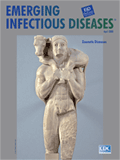
We conducted a cross-sectional study of β-herpesviruses in febrile pediatric oncology patients (n = 30), with a reference group of febrile pediatric solid-organ transplant recipients (n = 9). One (3.3%) of 30 cancer patients and 3 (33%) of 9 organ recipients were PCR positive for cytomegalovirus. Four (13%) of 30 cancer patients and 3 (33%) of 9 transplant recipients had human herpesvirus 6B (HHV-6B) DNAemia, which was more common within 6 months of initiation of immune suppression (4 of 16 vs. 0 of 14 cancer patients; p = 0.050). HHV-6A and HHV-7 were not detected. No other cause was identified in children with HHV-6B or cytomegalovirus DNAemia. One HHV-6B–positive cancer patient had febrile disease with concomitant hepatitis. Other HHV-6B–positive children had mild “viral” illnesses, as did a child with primary cytomegalovirus infection. Cytomegalovirus and HHV-6B should be included in the differential diagnosis of febrile disease in children with cancer.
| EID | Yee-Guardino S, Gowans K, Yen-Lieberman B, Berk P, Kohn D, Wang F, et al. β-Herpesviruses in Febrile Children with Cancer. Emerg Infect Dis. 2008;14(4):579-585. https://doi.org/10.3201/eid1404.070651 |
|---|---|
| AMA | Yee-Guardino S, Gowans K, Yen-Lieberman B, et al. β-Herpesviruses in Febrile Children with Cancer. Emerging Infectious Diseases. 2008;14(4):579-585. doi:10.3201/eid1404.070651. |
| APA | Yee-Guardino, S., Gowans, K., Yen-Lieberman, B., Berk, P., Kohn, D., Wang, F....Goldfarb, J. (2008). β-Herpesviruses in Febrile Children with Cancer. Emerging Infectious Diseases, 14(4), 579-585. https://doi.org/10.3201/eid1404.070651. |
CME Articles by Volume




